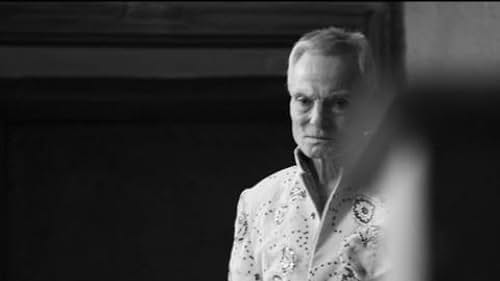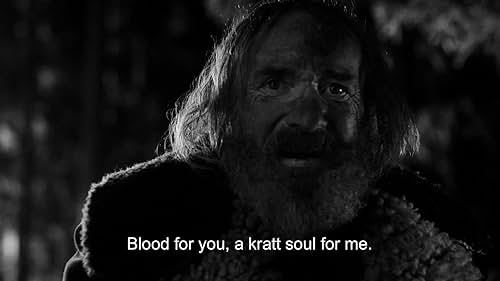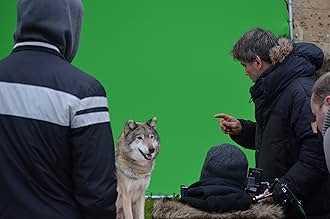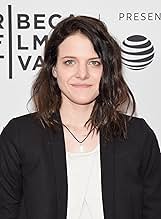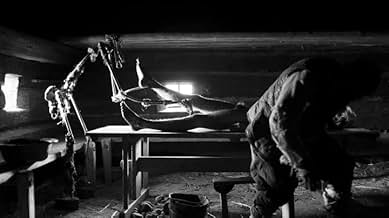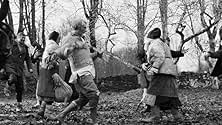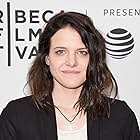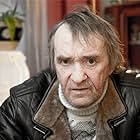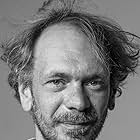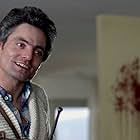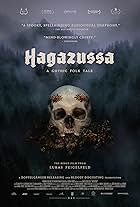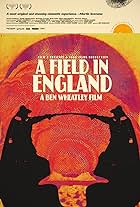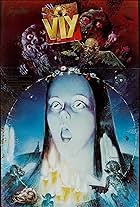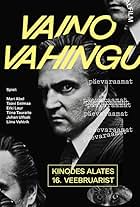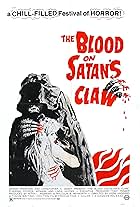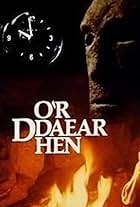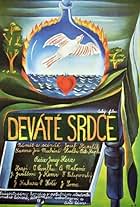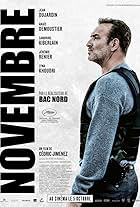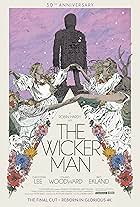November
- 2017
- 1h 55m
IMDb RATING
7.1/10
6.4K
YOUR RATING
In a poor Estonian village, a group of peasants use magic and folk remedies to survive the winter, and a young woman tries to get a young man to love her.In a poor Estonian village, a group of peasants use magic and folk remedies to survive the winter, and a young woman tries to get a young man to love her.In a poor Estonian village, a group of peasants use magic and folk remedies to survive the winter, and a young woman tries to get a young man to love her.
- Awards
- 25 wins & 7 nominations
Jörgen Liik
- Hans
- (voice)
- …
Enn Lillemets
- Ärni
- (as Ernst Lillemets)
- Director
- Writers
- All cast & crew
- Production, box office & more at IMDbPro
Storyline
Did you know
- TriviaEstonia's submission to the Foreign Language Film Award of the 90th Annual Academy Awards.
- ConnectionsFeatured in Woodlands Dark and Days Bewitched: A History of Folk Horror (2021)
Featured review
Based on a best-selling Estonian novel, "November" is a mixture of magic, black humor and romantic love. The story is set in a pagan Estonian village where werewolves, the plague, and spirits roam. The villagers' main problem is how to survive the cold, dark winter. And, to that aim, nothing is taboo. People steal from each other, from their German manor lords, and from spirits, the devil and even Christ.
The jaded genre fan, this reviewer included, rarely says "what the heck??" when watching a film. Because, frankly, once you have reviewed over 6,000 titles including some of Takashi Miike's craziest work ("Visitor Q") you feel like you have seen it all. But then comes the opening scene of "November", leaving you wide-eyed and full of glee. What is this medieval, cow-stealing robot? This magical creature is a "kratt", which comes from Estonian mythology. If you happen to be like me, you don't know anything about Estonian mythology. Well, a kratt is a collection of sticks, straw and farm implements that is granted life by the devil after its make offers up some blood, representing their soul. The maker then commands the kratt, who spends most of its time stealing things – including cows – for its master. If someone is especially clever, they can use blackcurrant berries rather than blood; the devil apparently does not check very closely, and you end up getting a kratt without forfeiting your soul. (You probably anger the devil in the process, but that is a whole other story.) Besides the kratt, the first thing that stands out is the beautiful cinematography in grey, creating a bleak world and occasionally the picture even looks washed out. Often, black and white looks better than color, in part because it allows for greater contrast. Interestingly, it looks great here despite the lack of contrast; this is a murky land, and it is viewed in a murky fashion. Such a choice seems appropriate for this village of squalor, and it causes me to wonder if perhaps Robert Eggers' "The Witch" might have benefited from black and white? While there are multiple plots and subplots occurring simultaneously, the central focus is a young woman named Liina (Rea Lest) who is hopelessly and forlornly in love with a village boy named Hans (Jorgen Liik). There romance is pretty standard, the typically boy meets girl story in a small village. Except that one of the two runs the risk of becoming a werewolf. And yes, this actually makes complete sense.
Rea Lest is a new actress and will not be familiar to North American audiences. Jorgen Liik is slightly more experienced, but again will probably not appear familiar. The one actor who should definitely stand out is Dieter Laser, who appears as the baron. Active since the 1960s, today Laser is almost universally recognized for his starring roles in "The Human Centipede" and its second sequel. His role is important not just because he is a baron, but because he represents the more mainstream, anti-pagan religious and Christian views in the film.
A scene at the church suggests a rejection of Christ in favor of folk magic, but instead we have to wonder if they really accept a mixture of the two? They clearly believe in the folk ways (werewolves, talking with spirits) but do not reject the Christian views entirely. One hunter uses blessed communion wafers in his hunting, believing that Christ guides him. There is also a preoccupation with souls; whether longing for a soul, selling your soul, or living without a soul, the theme of souls comes up again and again.
After exceptional cinematography, the thing that stands out most is the menacing music, creating a constant sense of unease. There is even the inclusion of "Blue Danube" into the score. For reasons unknown, that song has always left me feeling uncomfortable, at least as far back as 1992 when it was incorporated into the video game "Alone in the Dark". It seems no less unsettling to me here.
"November" plays July 23, 2017 at the Fantasia International Film Festival, and is one of the more highly-anticipated films of the 3-week schedule. For those who cannot attend, the movie was picked up by Oscilloscope, who will be releasing the film in theaters this Fall. This film will open doors for writer-director Rainer Sarnet.
The jaded genre fan, this reviewer included, rarely says "what the heck??" when watching a film. Because, frankly, once you have reviewed over 6,000 titles including some of Takashi Miike's craziest work ("Visitor Q") you feel like you have seen it all. But then comes the opening scene of "November", leaving you wide-eyed and full of glee. What is this medieval, cow-stealing robot? This magical creature is a "kratt", which comes from Estonian mythology. If you happen to be like me, you don't know anything about Estonian mythology. Well, a kratt is a collection of sticks, straw and farm implements that is granted life by the devil after its make offers up some blood, representing their soul. The maker then commands the kratt, who spends most of its time stealing things – including cows – for its master. If someone is especially clever, they can use blackcurrant berries rather than blood; the devil apparently does not check very closely, and you end up getting a kratt without forfeiting your soul. (You probably anger the devil in the process, but that is a whole other story.) Besides the kratt, the first thing that stands out is the beautiful cinematography in grey, creating a bleak world and occasionally the picture even looks washed out. Often, black and white looks better than color, in part because it allows for greater contrast. Interestingly, it looks great here despite the lack of contrast; this is a murky land, and it is viewed in a murky fashion. Such a choice seems appropriate for this village of squalor, and it causes me to wonder if perhaps Robert Eggers' "The Witch" might have benefited from black and white? While there are multiple plots and subplots occurring simultaneously, the central focus is a young woman named Liina (Rea Lest) who is hopelessly and forlornly in love with a village boy named Hans (Jorgen Liik). There romance is pretty standard, the typically boy meets girl story in a small village. Except that one of the two runs the risk of becoming a werewolf. And yes, this actually makes complete sense.
Rea Lest is a new actress and will not be familiar to North American audiences. Jorgen Liik is slightly more experienced, but again will probably not appear familiar. The one actor who should definitely stand out is Dieter Laser, who appears as the baron. Active since the 1960s, today Laser is almost universally recognized for his starring roles in "The Human Centipede" and its second sequel. His role is important not just because he is a baron, but because he represents the more mainstream, anti-pagan religious and Christian views in the film.
A scene at the church suggests a rejection of Christ in favor of folk magic, but instead we have to wonder if they really accept a mixture of the two? They clearly believe in the folk ways (werewolves, talking with spirits) but do not reject the Christian views entirely. One hunter uses blessed communion wafers in his hunting, believing that Christ guides him. There is also a preoccupation with souls; whether longing for a soul, selling your soul, or living without a soul, the theme of souls comes up again and again.
After exceptional cinematography, the thing that stands out most is the menacing music, creating a constant sense of unease. There is even the inclusion of "Blue Danube" into the score. For reasons unknown, that song has always left me feeling uncomfortable, at least as far back as 1992 when it was incorporated into the video game "Alone in the Dark". It seems no less unsettling to me here.
"November" plays July 23, 2017 at the Fantasia International Film Festival, and is one of the more highly-anticipated films of the 3-week schedule. For those who cannot attend, the movie was picked up by Oscilloscope, who will be releasing the film in theaters this Fall. This film will open doors for writer-director Rainer Sarnet.
- How long is November?Powered by Alexa
Details
Box office
- Budget
- €1,450,000 (estimated)
- Gross US & Canada
- $19,084
- Opening weekend US & Canada
- $3,354
- Feb 25, 2018
- Gross worldwide
- $19,084
- Runtime1 hour 55 minutes
- Color
- Aspect ratio
- 1.85 : 1
Contribute to this page
Suggest an edit or add missing content


